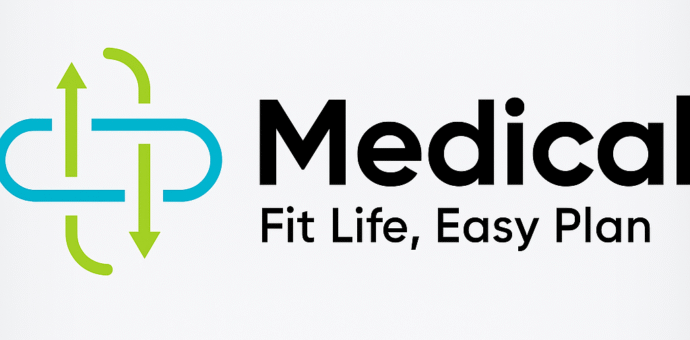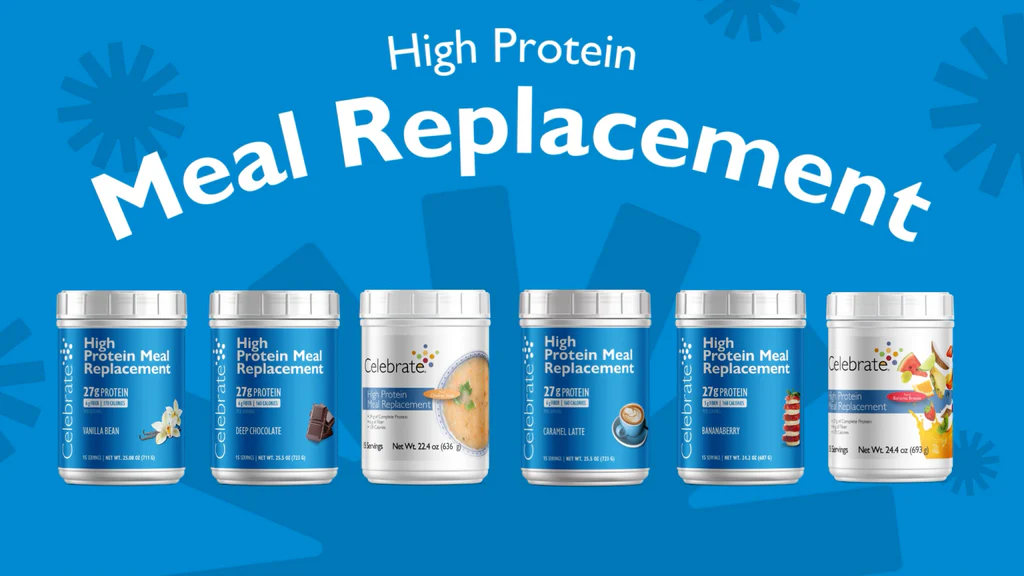Long days, late meetings, and constant context-switching make cooking—and even eating—feel optional. That’s where a high protein meal replacement can be a practical fix. When chosen well, it delivers balanced nutrition in minutes, keeps you full between calls, and helps you avoid the 3 p.m. snack spiral. In this guide, we’ll break down what “high protein” actually means, how to use shakes intelligently (not obsessively), and how to weave them into a simple, sustainable plan. We stock options from brands you already know—SlimFast, Ensure, Almased—so you can match the high protein meal replacement to your schedule, taste, and goals.
Quick note: Shakes are tools, not magic. Pair a high protein meal replacement with small, repeatable habits—hydration, fiber, and light movement—and you’ll feel the difference on even your busiest weeks.
Why a High Protein Meal Replacement Works for Hectic Schedules
If you regularly skip breakfast, push lunch, or raid the snack drawer late at night, structure beats willpower. A high protein meal replacement offers:
-
Portion control: Clear calories and macros; fewer decisions.
-
Fullness: Protein and fiber help reduce grazing and drive steadier energy.
-
Speed: 30–60 seconds to mix; ready-to-drink options for travel days.
Typical pain points it solves
-
“Breakfast turns into coffee and… nothing.”
-
“Lunch is a desk snack that doesn’t fill me up.”
-
“Dinner gets late, and I binge.”
What “High Protein” Really Means (And Why It Matters)
For most working adults, 20–30 g protein per serving is the sweet spot for satiety and muscle maintenance. Many professionals feel notably fuller in that range.
A balanced high protein meal replacement usually targets:
-
Calories: ~200–400 (meal replacement, not just a snack)
-
Protein: 20–30 g (whey, casein, soy, or pea)
-
Fiber: 3–10 g (or add fruit/chia to reach it)
-
Fat: 7–15 g (for absorption, taste, and satiety)
-
Micros: Vitamins/minerals to round out the “mini-meal”
Want a simple, trustworthy nutrition refresher? The NHS has a clear overview of healthy eating principles (external):
https://www.nhs.uk/live-well/eat-well/
High Protein Meal Replacement: Protein Types at a Glance
-
Whey (milk-based): Fast-absorbing; great for mornings or post-workouts.
-
Casein (milk-based): Slower-digesting; steadier fullness through long meetings.
-
Plant (soy/pea): Dairy-free; often gentler on sensitive stomachs.
Pro tip: Many professionals keep one whey or soy/pea option at home and a ready-to-drink bottle at work or in the gym bag.
How to Read the Label (Fast)
When you scan the label of a high protein meal replacement, check:
Must-haves
-
≥20 g protein per serve
-
3–10 g fiber (or plan to add berries/chia)
-
<10 g added sugar (naturally occurring milk sugars are fine)
Red flags
-
Ultra-low calories (<150 kcal): More snack than meal—expect hunger.
-
High added sugars: Energy spike → crash during late-afternoon calls.
-
Sub-15 g protein: Hunger returns quickly.
Brand Snapshot: SlimFast, Ensure, Almased (What Fits When)
We carry a range so you can slot the high protein meal replacement into your actual day.
SlimFast
-
Use when: You want straightforward calorie control and consistent macros.
-
Best for: Breakfast replacement or a controlled lunch on busy office days.
Ensure
-
Use when: You need convenient, ready-to-drink reliability during travel weeks.
-
Best for: Meetings stacked back-to-back; steady macros with no prep.
Almased
-
Use when: You prefer a higher-protein, soy-based formula with a simpler profile.
-
Best for: Evening meal replacement that fights late-night snacking.
Compare flavors, protein type, calories, and fiber side-by-side with our Meal Replacement Finder. (Internal link)
A Simple 5-Day High Protein Plan (Built for Real Life)
Daily template (plug-and-play)
-
Breakfast (2–3 minutes):
-
High protein meal replacement (20–30 g protein) + ½ cup berries
-
Coffee/tea + water
-
-
Mid-morning:
-
Greek yogurt or a handful of nuts
-
-
Lunch (10–15 minutes):
-
Protein-forward salad/wrap or a second high protein meal replacement + side salad
-
-
Afternoon:
-
Apple + nut butter or veg sticks + hummus
-
-
Dinner (15–20 minutes):
-
Protein (chicken, tofu, fish) + veg + whole grain/potato
-
If very late: light soup + small roll
-
When two shakes/day makes sense
-
Client visits, travel, or a day you know dinner will be social and heavier.
Turn Any Good Shake into a High Protein Meal Replacement
Boost fullness without over-calories
-
Add 1 tbsp chia (fiber, omega-3s)
-
Add 80–120 ml milk or fortified plant milk for creaminess and calcium
-
Blend ½ cup frozen berries (fiber + antioxidants)
Upgrade macros smartly
-
½ scoop extra protein if your base is under 20 g
-
1 tbsp peanut/almond butter for healthy fats and flavor
-
Small handful oats for slower-release carbs
Travel hack: Pre-portion dry add-ins (chia, oats, powder) in mini bags. Keep a foldable shaker in your backpack or briefcase.
High Protein Meal Replacement vs. “Snack Surfing”
A high protein meal replacement reduces decision fatigue: one deliberate choice replaces five scattered snack decisions. Protein + fiber = fewer glucose dips, calmer focus, and better mood during long blocks of meetings. You’ll notice fewer vending-machine detours and more consistent afternoons.
Where Shakes Fit in a Tailored, Prescription-Based Plan
If you want guardrails and accountability, our prescription-based plans slot a high protein meal replacement into a routine that respects your calendar, preferences, and energy needs. For some, clinician-supervised options (with or without medication) enhance appetite control and consistency.
What you can expect
-
A brief intake to map goals and schedule
-
Macro targets matched to your workload (travel weeks vs. desk weeks)
-
A shake “matrix” (SlimFast, Ensure, Almased) aligned to your busiest windows
-
Optional check-ins to tweak calories and composition as your pace changes
Curious about medically guided options and how they pair with nutrition? Visit Weight Loss Injections Explained for a plain-English overview. (Internal link)
Troubleshooting: Common “Busy Week” Problems
Always starving by 4 p.m.?
-
Push protein to 30 g at lunch and add 5–10 g fiber.
-
Add a small fat source (nuts/nut butter) to slow digestion.
Nighttime grazing?
-
Make dinner a high protein meal replacement plus a big side salad.
-
Brush teeth early to trigger “kitchen closed.”
Travel chaos?
-
Pack ready-to-drink bottles.
-
Keep two dry packets in your laptop sleeve at all times.
FAQs: High Protein Meal Replacement for Workdays
How many shakes a day?
One is great for breakfast or lunch. Two can work on high-pressure days, then pivot back to one when you’re home and cooking.
Do I still need snacks?
Usually yes—planned snacks beat unplanned ones. Pair protein with fiber (e.g., yogurt + fruit).
Is plant protein as good as whey?
Both can be effective. Choose based on tolerance, taste, and availability. Many busy pros like whey for mornings and soy/pea for later in the day.
Do I need to count calories?
Not strictly. Let the high protein meal replacement simplify decisions; adjust portions and snacks based on hunger and progress.
Putting It All Together (Without Overthinking It)
A high protein meal replacement can make “eating well” realistic on the busiest days. Choose 20–30 g protein, add fiber, keep sugars reasonable, and use quick add-ins (chia, oats, nut butter) to tailor fullness. Use one shake daily as your baseline; deploy a second shake when meetings stack or travel ramps up. When you want more structure, our prescription-based plans map SlimFast, Ensure, and Almased to your week so you can stay nourished and focused without micromanaging every meal.
Explore our full range and filter by protein type, flavor, calories, and fiber with the Meal Replacement Finder. (Internal link)
For general nutrition guidance, see the NHS eat well hub (external): https://www.nhs.uk/live-well/eat-well/



